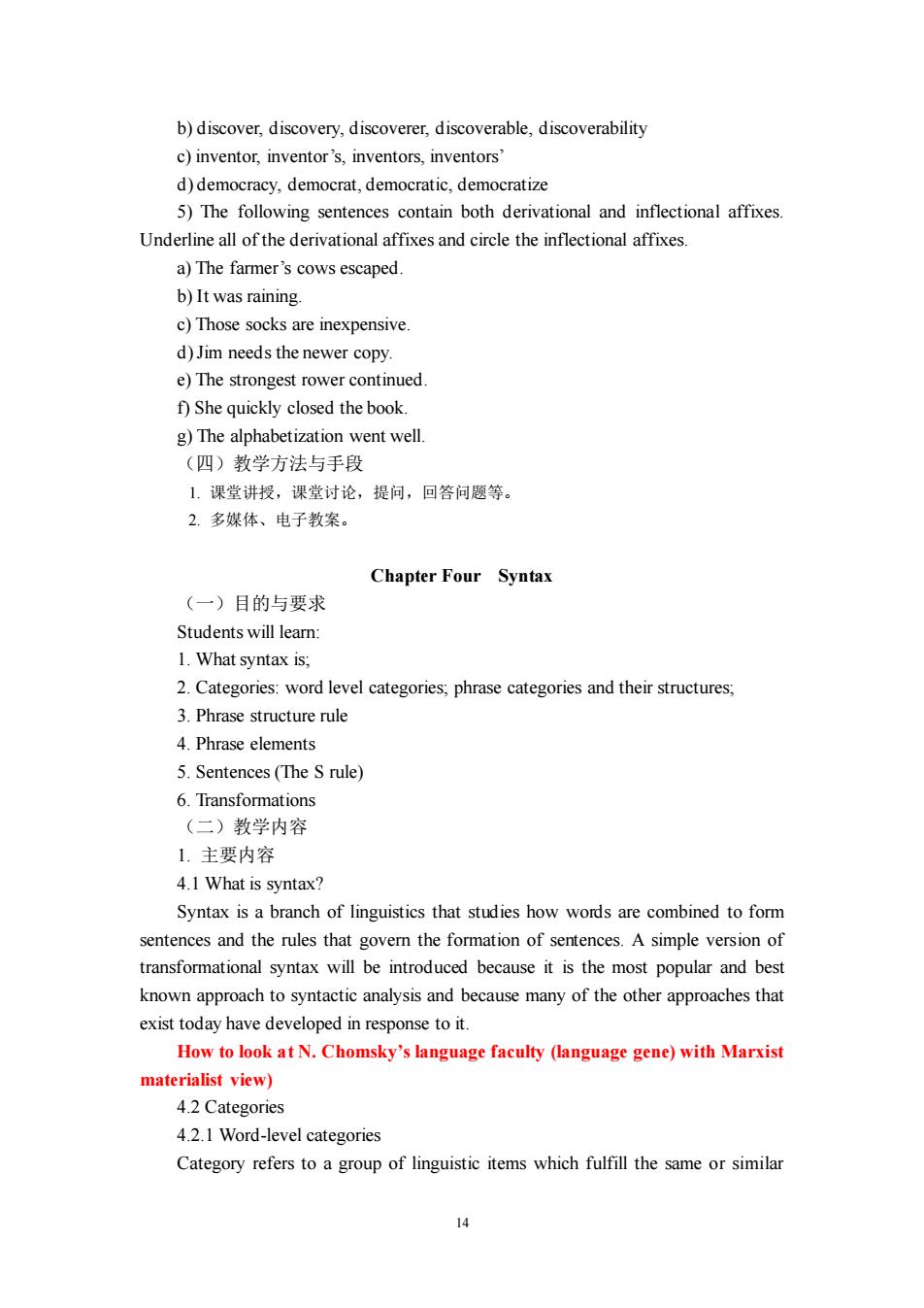正在加载图片...

b)discover,discovery,discoverer,discoverable,discoverability c)inventor,inventor's,inventors,inventors' d)democracy,democrat,democratic,democratize 5)The following sentences contain both derivational and inflectional affixes. Underline all ofthe derivational affixes and circle the inflectional affixes a)The farmer's cows escaped. b)It was raining c)Those socks are inexpensive d)Jim needs the newer copy. e)The strongest rower continued f)She quickly closed the book g)The alphabetization went well (四)教学方法与手段 1.课堂讲授,课堂讨论,提问,回答问题等。 2.多媒体、电子教案。 Chapter Four Syntax (一)目的与要求 Students will learn: 1.What syntax is; 2.Categories:word level categories;phrase categories and their structures. 3.Phrase structure rule 4 Phrase elements 5.Sentences(The S rule) 6.Transformations (二)教学内容 1主要内容 4.1 What is syntax? Syntax is a branch of linguistics that studies how words are combined to form sentences and the rules that govem the formation of sentences.A simple version of transformational syntax will be introduced because it is the most popular and best known approach to syntactic analysis and because many of the other approaches that exist today have developed in response to it. How to look at N.Chomsky's language faculty (language gene)with Marxist naterialist view) 4.2Categories 4.2.1 Word-level categories Category refers to a group of linguistic items which fulfill the same or similar 14 b) discover, discovery, discoverer, discoverable, discoverability c) inventor, inventor’s, inventors, inventors’ d) democracy, democrat, democratic, democratize 5) The following sentences contain both derivational and inflectional affixes. Underline all of the derivational affixes and circle the inflectional affixes. a) The farmer’s cows escaped. b) It was raining. c) Those socks are inexpensive. d) Jim needs the newer copy. e) The strongest rower continued. f) She quickly closed the book. g) The alphabetization went well. (四)教学方法与手段 1. 课堂讲授,课堂讨论,提问,回答问题等。 2. 多媒体、电子教案。 Chapter Four Syntax (一)目的与要求 Students will learn: 1. What syntax is; 2. Categories: word level categories; phrase categories and their structures; 3. Phrase structure rule 4. Phrase elements 5. Sentences (The S rule) 6. Transformations (二)教学内容 1. 主要内容 4.1 What is syntax? Syntax is a branch of linguistics that studies how words are combined to form sentences and the rules that govern the formation of sentences. A simple version of transformational syntax will be introduced because it is the most popular and best known approach to syntactic analysis and because many of the other approaches that exist today have developed in response to it. How to look at N. Chomsky’s language faculty (language gene) with Marxist materialist view) 4.2 Categories 4.2.1 Word-level categories Category refers to a group of linguistic items which fulfill the same or similar